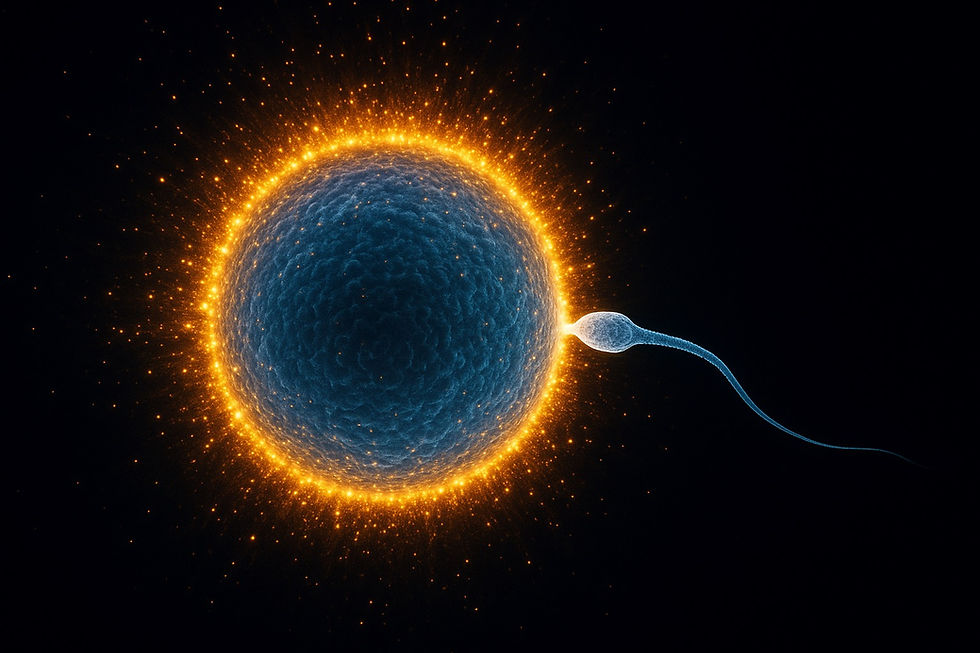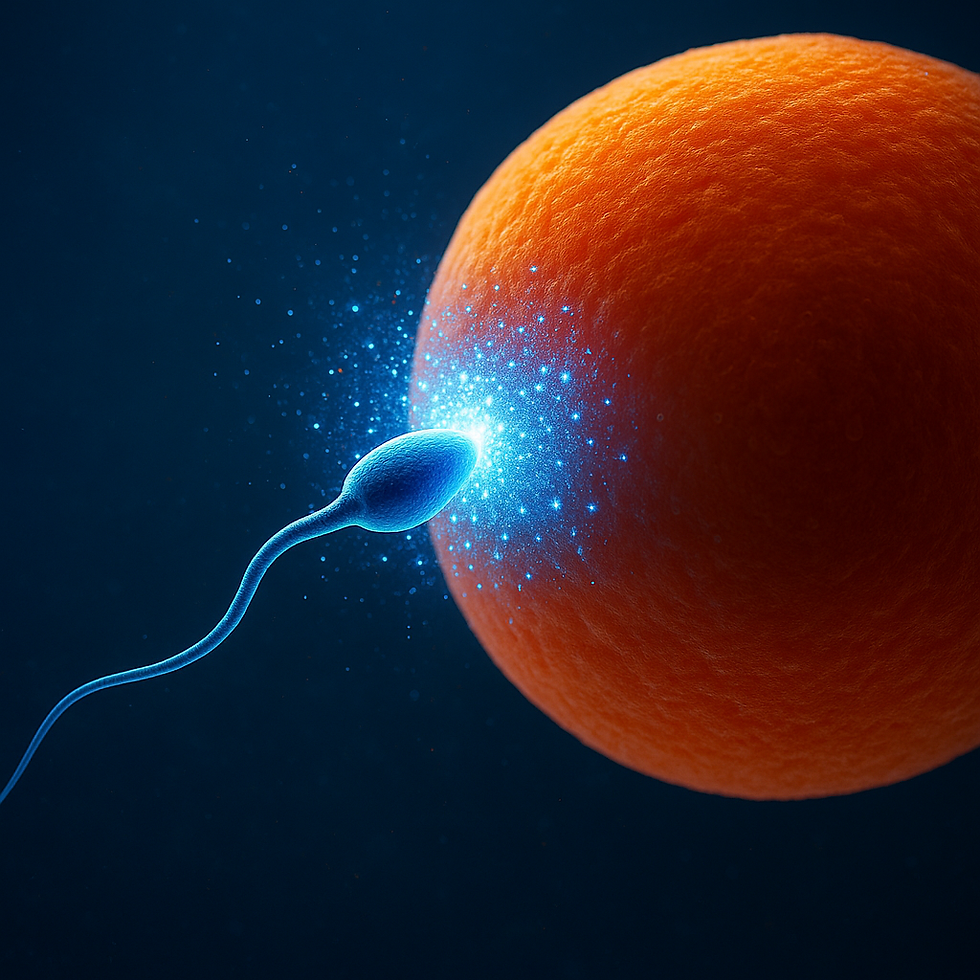From Photons to Human Form
- Courtney Hunt, MD

- Sep 29
- 2 min read
For billions of years, this 0.0035% slice of the Sun’s spectrum bathed our oceans, our microbial mats, and eventually our earliest multicellular ancestors. Photons in this range were not only an energy source—they became a developmental cue. Biophotons and photoreceptive proteins guided circadian rhythms long before there were clocks or eyes.
And here lies the remarkable pattern: when the central band of the spectrum is viewed at the right angle, its shape appears anthropomorphic. You can see the suggestion of arms, legs, and a head—a symmetry echoed in our own bodies. Over millions of years, light itself projected this archetype, and life evolved in its image.

The implication is profound: evolution wasn’t random wandering in the dark. It was guided by the structure of the photon environment, imprinting form on matter through resonance and repetition.
Standing Up in the Light Cone
Once primates emerged, bipedalism was not just a matter of freeing the hands; it was a reorientation of our entire body into the Sun’s light cone. Being upright maximized exposure of the retina and scalp to solar photons at dawn and dusk, times when circadian entrainment is strongest. Standing also changed how melanin, vitamin D synthesis, and nitric oxide release in the skin worked relative to solar angle.
Arms became tools for reaching and manipulating rather than locomotion. Heads rose above the heat boundary layer, improving thermoregulation and scanning the horizon. Every one of these adaptations fed back into light-based signaling, improving reproductive timing, hormone balance, and ultimately brain development.
In other words, the tiny fraction of solar light that Earth lets in did not merely sustain us—it sculpted us, both biologically and symbolically.
Implications for Today
We now live mostly indoors, under artificial light sources that do not resemble the spectral signature that shaped our biology. We have inverted the original pattern: instead of dawn–daylight–dusk, we live in dim mornings, harsh indoor LEDs, and glowing screens at night. This disconnect is visible in our circadian disruption, metabolic disease, and cognitive decline.
Re-engaging with the center of the spectrum—the same 0.0035% that shaped our ancestors—may be one of the simplest yet most powerful longevity interventions. Dawn light, full-spectrum outdoor exposure, and circadian alignment are not wellness trends; they are a return to the photonic environment that built the human form in its image.
Looking Forward: Reverse-Engineering Evolution’s Light
If we understand how a zygote responds to a single zinc spark, how cells sense photonic information, and how the Sun’s narrow window shaped our anatomy, we can begin to reverse-engineer those processes in adult cells. This is exactly where longevity research is headed: using light, electromagnetic fields, and metabolic cues to reset adult tissues toward a younger state—just as the embryo does naturally.




Comments